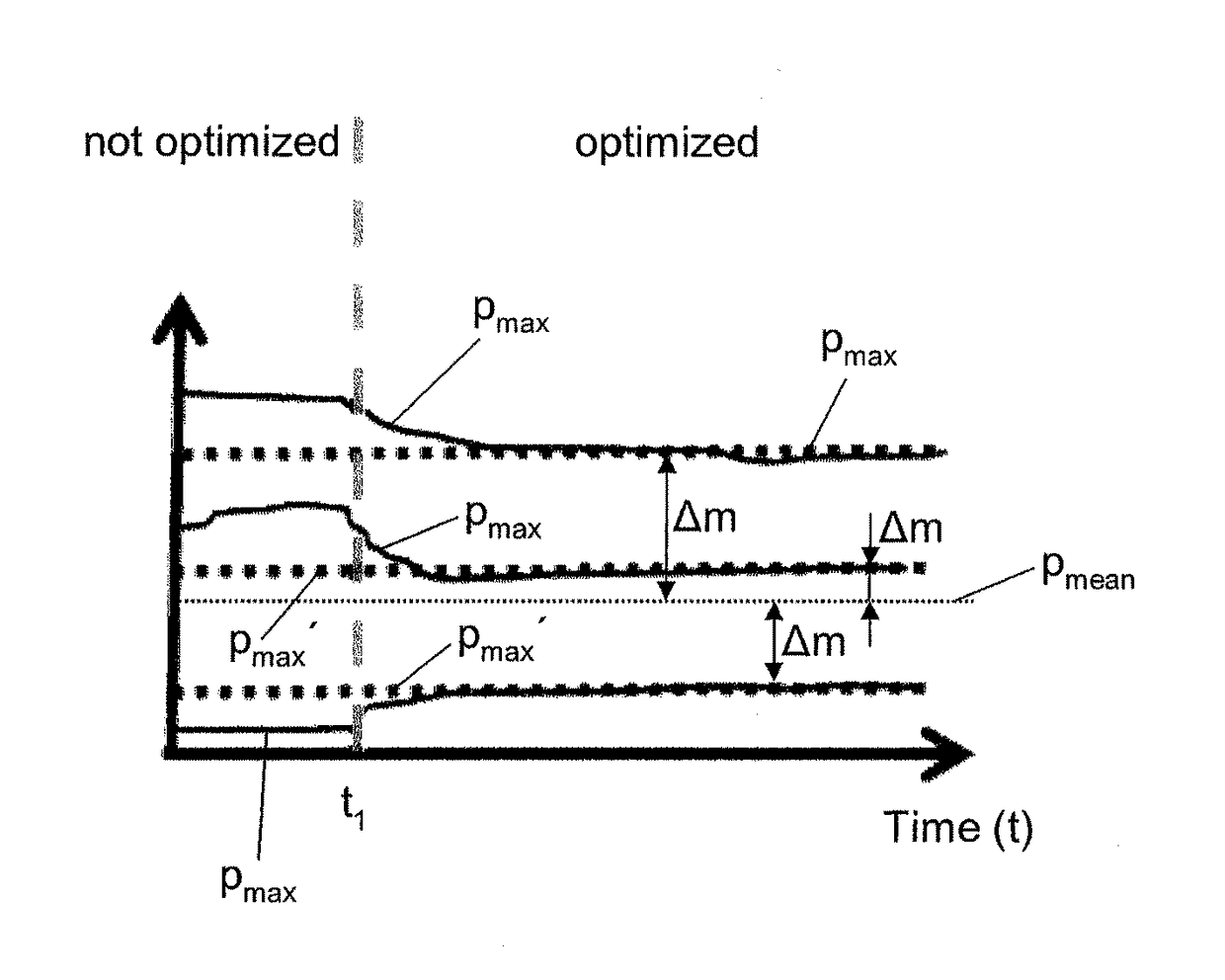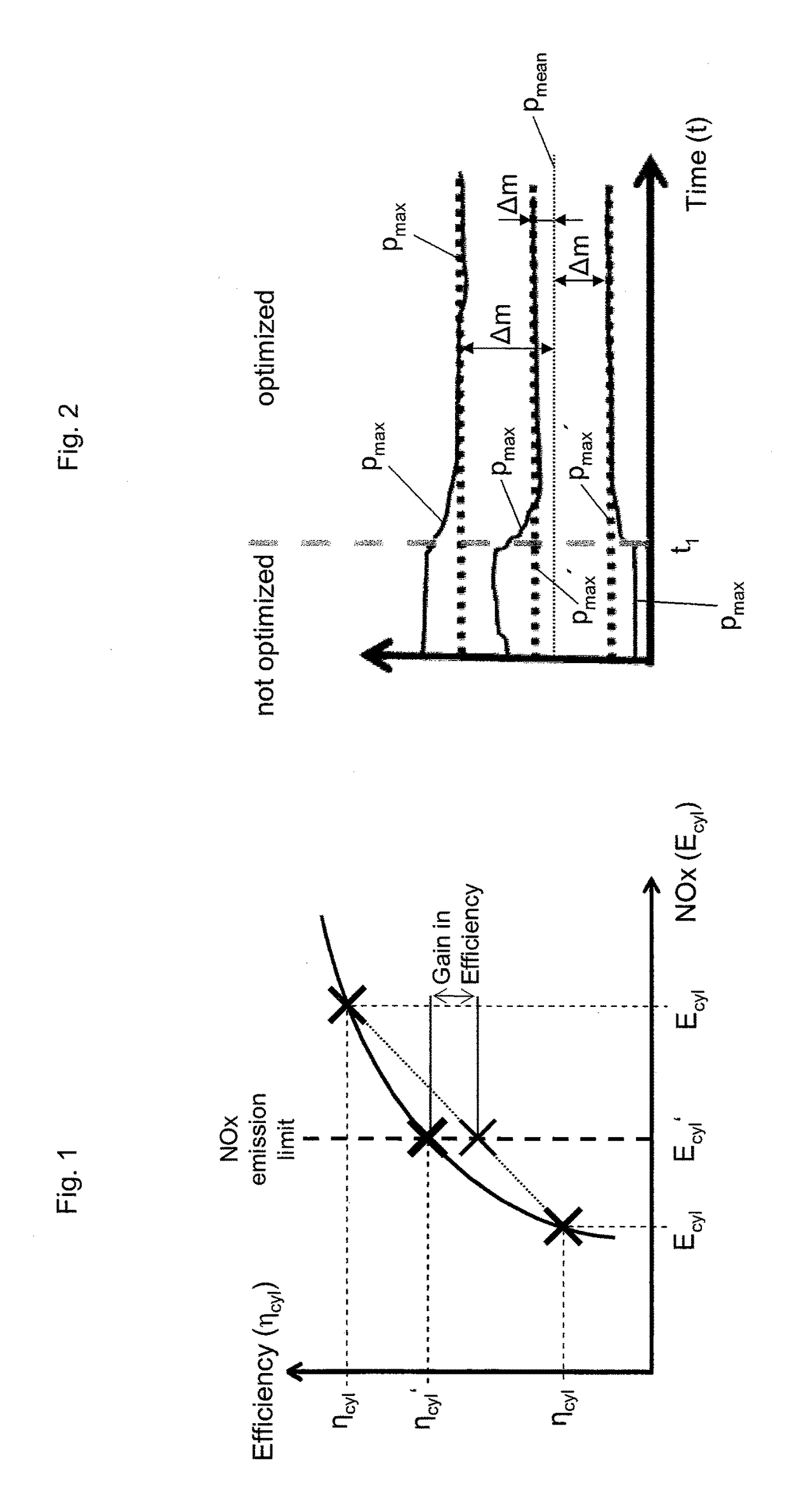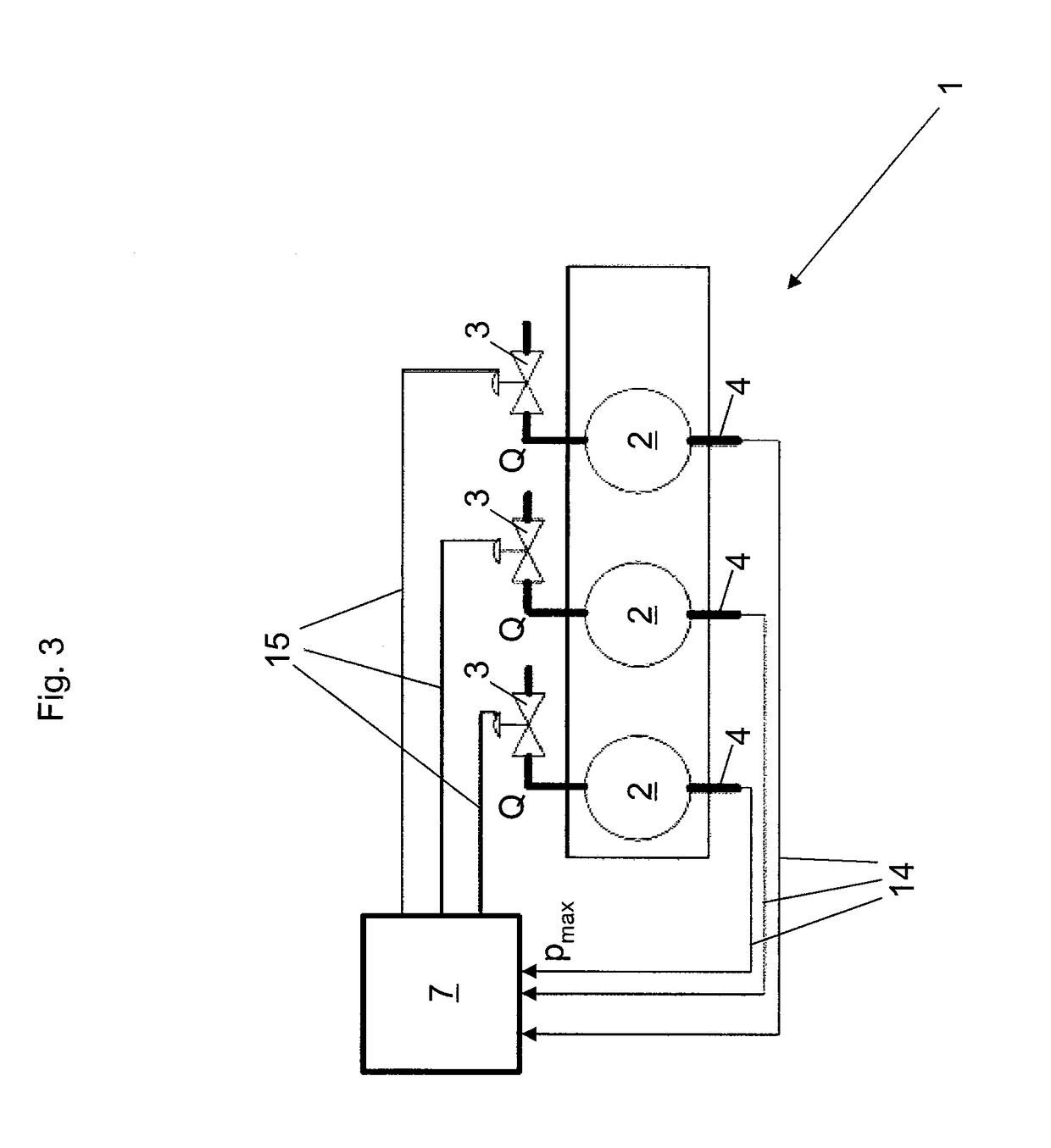Method for operating an internal combustion engine
- Summary
- Abstract
- Description
- Claims
- Application Information
AI Technical Summary
Benefits of technology
Problems solved by technology
Method used
Image
Examples
Embodiment Construction
[0061]FIG. 1 shows, by way of example, the cylinder efficiencies ηcyl of two cylinders 2 of an internal combustion engine 1 (see FIG. 3) as a function of their respective NOx emissions Ecyl as well as desired target values to be obtained with the proposed method for the NOx emissions Ecyl′ and for the cylinder efficiencies ηcyl′ of all cylinders 2.
[0062]The profile of a cylinder efficiency ηcyl to be obtained exhibits therein a non-linear dependency on the respective NOx emission Ecyl of the corresponding cylinder 2. The different NOx emissions Ecyl shown and the associated respectively different cylinder efficiencies ηcyl of the cylinders can in particular be caused by cylinder-specific differences in cylinder parameters—such as different air charges, deposits and wear, centers of combustion, or mechanical tolerances of the cylinders 2.
[0063]By means of the proposed method, these different cylinder-specific cylinder parameters can be taken into account, since for each cylinder 2, a...
PUM
 Login to view more
Login to view more Abstract
Description
Claims
Application Information
 Login to view more
Login to view more - R&D Engineer
- R&D Manager
- IP Professional
- Industry Leading Data Capabilities
- Powerful AI technology
- Patent DNA Extraction
Browse by: Latest US Patents, China's latest patents, Technical Efficacy Thesaurus, Application Domain, Technology Topic.
© 2024 PatSnap. All rights reserved.Legal|Privacy policy|Modern Slavery Act Transparency Statement|Sitemap



